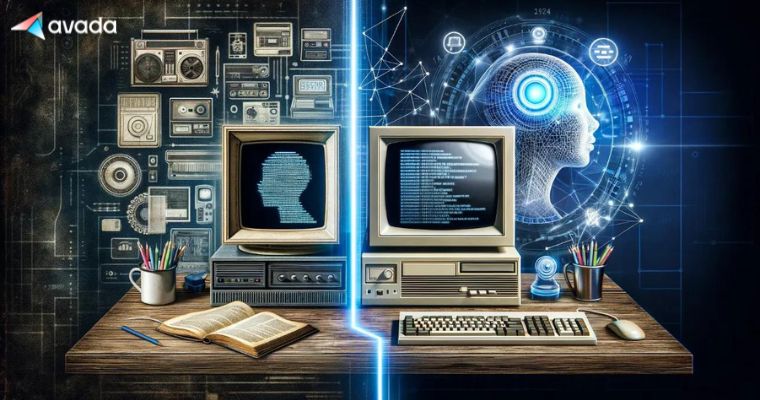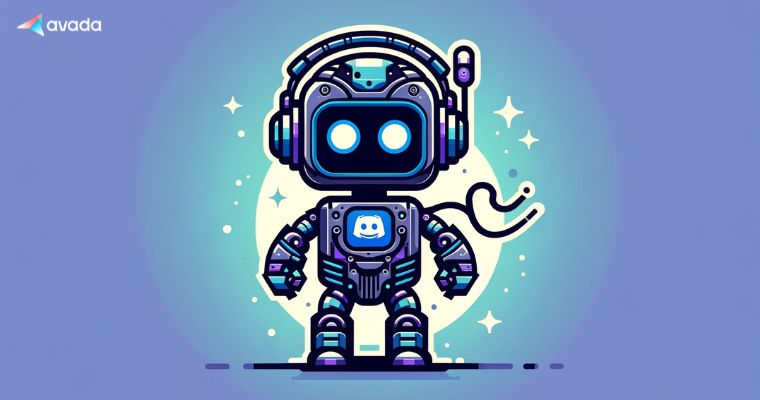ChatGPT 5 vs 4: A Comprehensive Comparison
This comprehensive comparison article of ChatGPT 5 vs 4 will delve into the enhancements and capabilities distinguishing the two iterations of OpenAI’s models.
GPT-4 vs GPT-5: A Comparative Analysis
| Feature | GPT-4 | GPT-5 (Expected) |
| Release | Late 2022 | Late 2024/Early 2025 |
| Data Volume | Massive | Larger, more diverse |
| Parameters | >1 trillion | >>1 trillion |
| Speed | Fast | Faster |
| Understanding | Wide range, some struggles | Deeper, nuanced |
| Problem Solving | Basic | Advanced |
| Capabilities | Text | Multimodal |
| Bias Mitigation | Active work | Enhanced features |
| Applications | Varied (creation, bots) | Broader (research, service) |
| Architecture | Transformer | Graph neural network |
| Learning | Supervised | Unsupervised |
| Language Skills | Coherent text | Nuanced, complex |
| Multilingual | English-centric | Multi-language support |
One more thing to keep in mind is the pricing of ChatGPT 5. For now, ChatGPT Plus costs $20 per month. And of course, we can expect ChatGPT 5 would cost a bit more.
When Will GPT-5 Be Released?
OpenAI could release ChatGPT 5 sometime in mid-2024; however, OpenAI has not officially confirmed a date. The timing could align with significant company events or follow OpenAI’s historical pattern of releases, but for now, the exact timing remains speculative.
What Features Can We Expect From GPT-5?
Here’s an overview of the expected features of ChatGPT 5 based on the trends in AI development:
Parameter size
The evolution of AI models has consistently involved increases in their size and complexity. As these models grow, they can process and understand information more deeply.
This expansion is not just about the sheer volume of data they can handle but also their ability to discern patterns and make connections within larger contexts. This means that the forthcoming model could potentially handle more complex tasks and provide more nuanced and detailed responses.
Multimodality
Integrating different types of data processing—like text, images, and possibly videos—into a single model opens up new avenues for AI applications. This would allow you to interact with AI more diversely, making the technology more accessible and versatile.
For example, one could describe a scene in text and have the AI generate a corresponding image, or vice versa, thereby enabling richer, more interactive experiences.
From Chatbot to Agent
The transition signifies a move towards AI systems that can perform tasks independently based on user inputs or predefined objectives.
This could mean an AI that not only provides information or carries out conversations but can also execute tasks like scheduling, shopping, or even composing music based on specific user requests or preferences.

Better accuracy
As AI models become more sophisticated, their ability to understand context and deliver accurate responses improves. This results in more meaningful and dependable interactions, reducing the frequency of errors or irrelevant responses.
Such advancements in accuracy are crucial for applications where reliability is paramount, such as in medical diagnoses, legal research, or educational tutoring.
Increased context windows
Enhancing an AI model’s ability to maintain and reference a broader context within a conversation allows for more coherent and relevant interactions over longer periods.
This could dramatically improve the usability of AI in scenarios that require deep dives into topics or long-term engagement, such as in writing assistance, complex problem-solving, or detailed analysis of texts.
Improved Architecture and Training Techniques
GPT-5 introduces a more advanced architecture with technologies like graph neural networks and sophisticated attention mechanisms, enhancing its linguistic processing and accuracy. These improvements allow it to capture the subtleties of human communication more effectively.
Furthermore, its training techniques have evolved, leveraging a broader and more varied dataset and shifting towards unsupervised learning. This enables GPT-5 to autonomously learn from vast amounts of data, significantly boosting its language understanding and generation capabilities.
Enhanced Language Modeling and Multilingual Support
GPT-5’s advancements in language modeling capabilities and multilingual support are merging to redefine AI communication. By enhancing its ability to mirror human-like nuances such as sarcasm and irony, GPT-5 significantly improves in generating coherent, context-aware responses. This evolution enables more meaningful dialogues, closely resembling a natural human conversation.
Additionally, its expanded support for multiple languages positions it as a versatile tool for global communication, facilitating language translation and content creation across diverse linguistic backgrounds. This dual enhancement makes GPT-5 an invaluable asset for bridging cultural and linguistic gaps in a digitally connected world.
Increased processing power for efficient work environments
Chat GPT-5 has been developed to outshine its predecessor in processing speeds and accuracy significantly. This is achieved by amplifying its computational capabilities, allowing it to perform up to 30% better on various machine learning benchmarks.
This enhancement not only improves its interaction with users by providing quicker and more accurate responses but also expands its accessibility to a broader audience, including those who speak languages other than English. The AI’s ability to sift through and process double the amount of words compared to the previous version means it can manage larger documents more efficiently, streamlining workflows and making it a robust tool for handling extensive data analysis.

Enhanced security features for user protection
On the security front, Chat GPT-5 introduces more rigorous measures to ensure user safety and data protection. The AI’s training has been expanded to cover a wider array of commands, including those with malicious intent, drastically reducing its susceptibility to manipulation.
Moreover, it demonstrates a heightened ability to discern and avoid responding to prohibited content, significantly lowering the risk of disseminating misinformation. By delivering responses that are more concise and grounded in facts, Chat GPT-5 ensures that its interactions are not only safer but also more reliable and consistent. This focus on enhanced security and factuality underlines OpenAI’s commitment to creating an AI that you can trust for both its intellect and integrity.
Potential Applications: What will GPT-5 be capable of?
Here are some potential applications based on the advancements and technical capabilities anticipated with GPT-5:
In Healthcare
- Personalized Medical Consultation: GPT-5 could analyze patient data, histories, and symptoms to provide tailored medical advice, potentially assisting doctors in diagnosing and creating more personalized treatment plans.
- Medical Research: It could accelerate medical research by parsing and summarizing vast scientific literature, helping researchers identify new treatment paths and medical insights faster.
In Education
- Customized Learning Experiences: By understanding individual learning styles and needs, GPT-5 could offer personalized education, adapting content in real-time to suit each student’s pace and learning objectives.
- Virtual Tutors: Serve as highly responsive virtual tutors capable of addressing various subjects, providing students instant feedback, and helping bridge educational gaps.
In Finance
- Market Analysis: GPT-5 could analyze complex financial markets, identify trends, and provide investment insights with enhanced predictive analytics capabilities.
- Automated Customer Service: Offer more intuitive financial advice to users, improve customer service through chatbots that understand and process user requests more accurately.
In Creative Industries
- Content Creation: Assist in generating original content across various formats, from writing and music composition to visual arts, by understanding and replicating creative patterns.
- Enhanced Design Processes: Aid in the design process by providing suggestions, iterating on creative ideas, and even generating prototypes based on descriptive inputs.
In Customer Service
- Enhanced Chatbots: Beyond traditional customer service inquiries, chatbots powered by GPT-5 could handle complex customer interactions, provide personalized recommendations, and improve overall customer experience.
- Sentiment Analysis: Improve sentiment analysis to better gauge customer mood and tailor responses accordingly, ensuring more empathetic customer interactions.
In Real Estate (AGENT AI Chat Bot)
- Accurate Matching: Leverage deep understanding of user queries to match clients with suitable real estate agents more accurately, considering nuanced preferences and requirements.
- Market Insights: Provide real-time insights into market trends, property valuations, and investment opportunities by analyzing large datasets.
In Multilingual Applications
- Language Translation: Offer high-quality, context-aware translations, making communications and content accessible across linguistic barriers.
- Cross-cultural Communication: Facilitate smoother cross-cultural communication by understanding and respecting linguistic nuances and cultural contexts.
Ethical and Societal Implications
- Bias Mitigation: With its advanced understanding, GPT-5 could better identify and mitigate biases in data, promoting fairness in AI applications.
- Privacy and Security: Enhance privacy and security measures, ensuring sensitive information is handled responsibly, especially in applications requiring personal data handling.

Limitations and Challenges of GPT-5
The advancements GPT-5 brings to the table are substantial, yet it’s important to be aware of the limitations and challenges it faces:
- Scaling Complexity: One of the significant challenges for GPT-5 involves scaling up from its predecessors. As models become more complex, they require increasingly larger datasets for training, and the computational power needed to process this information grows exponentially. This can lead to practical limitations on how quickly and effectively these models can be trained and updated.
- Ethical and Legal Concerns: GPT-5’s advanced capabilities raise ethical questions, particularly around the generation of content that could potentially infringe on copyright laws or spread misinformation. The balance between developing an AI that can understand and generate human-like text and ensuring it does not misuse copyrighted material or generate harmful content is a fine line to walk.
- Resource Intensity: The computational resources required to run GPT-5 are significant. Training such a model can be prohibitively expensive, requiring access to state-of-the-art hardware that may not be accessible to all researchers and developers. This could limit the ability to innovate and iterate on the model outside of well-funded organizations.
- Accessibility and Democratization: While GPT-5 offers groundbreaking capabilities, its accessibility could be limited due to the high costs associated with using such a powerful model. This raises concerns about the democratization of AI, where only entities with significant resources can fully leverage the technology, potentially widening the gap between large corporations and smaller developers or researchers.
GPT-5 Interesting Facts and Stats
- Release Timeline: GPT-4 launched on March 14, 2023, with GPT-5 anticipated to follow, expected to significantly surpass GPT-4’s capabilities.
- Data Size for Training: Estimates suggest GPT-5’s high-quality language data ranges between 4.6 to 17 trillion words, indicating potential data exhaustion between 2024 and 2027.
- Enhanced Capabilities: GPT-5 aims to improve upon GPT-4’s limitations, featuring autonomous task performance capabilities, suggesting major advancements in AI-assisted work.
- Early Access Feedback: Select customers have tested GPT-5, reporting it as “materially better” than GPT-4, highlighting its potential to transform AI applications across industries.
- Challenges and Legalities: GPT-5 development confronts challenges like declining user engagement with GPT-4, accuracy issues, and legal complexities regarding copyright and organizational transition from non-profit to for-profit.
- Industry Impact: The release of GPT-5 is poised to prompt significant discussions within the tech industry on AI development, integration in enterprise applications, and the legal and ethical implications of advanced AI technologies.

FAQs: ChatGPT 5 vs 4
How much better is GPT 5 than 4?
How will GPT 5 be different?
How advanced is ChatGPT 5?
Conclusion
In conclusion, the comparison between ChatGPT 5 and ChatGPT 4 reveals significant enhancements that make the newer version a more robust and versatile tool. Whether it’s through improved understanding, enhanced language capabilities, or the integration of more advanced multimodal features, ChatGPT 5 stands out as a substantial leap forward from its predecessor.

ChatGPT’s Second Anniversary

How to Use Kayak ChatGPT Plugin to Plan Your Trip

